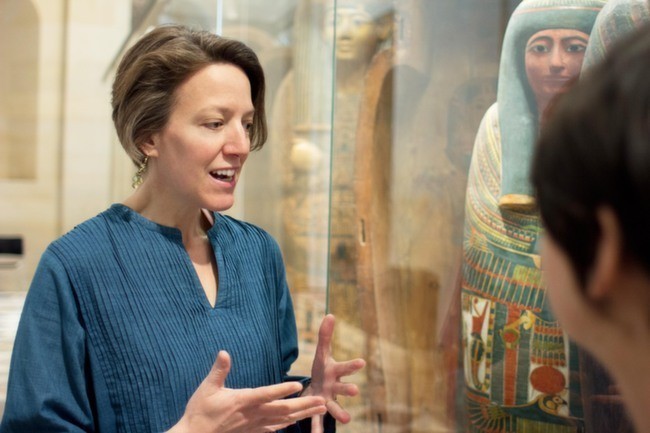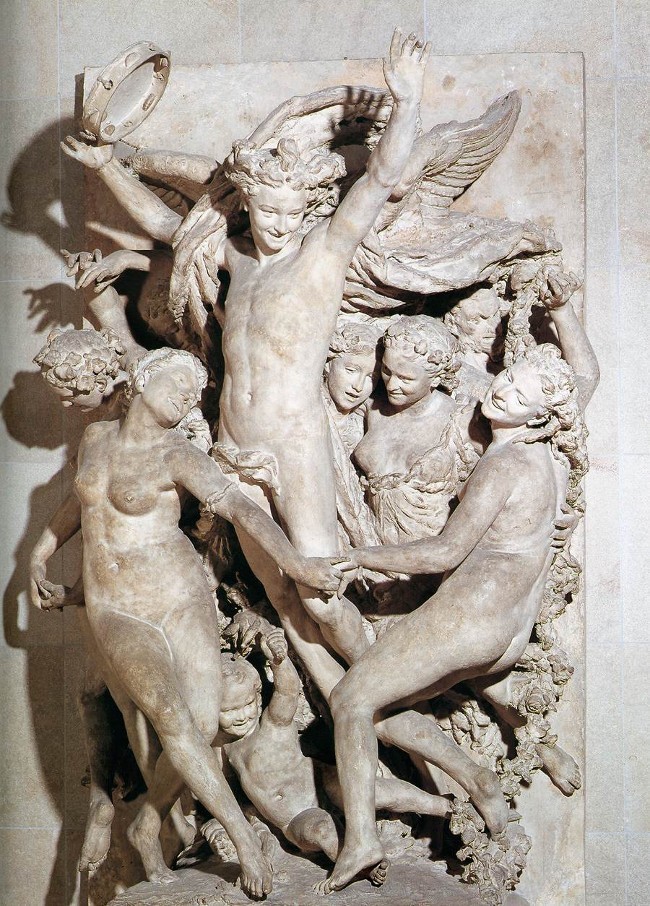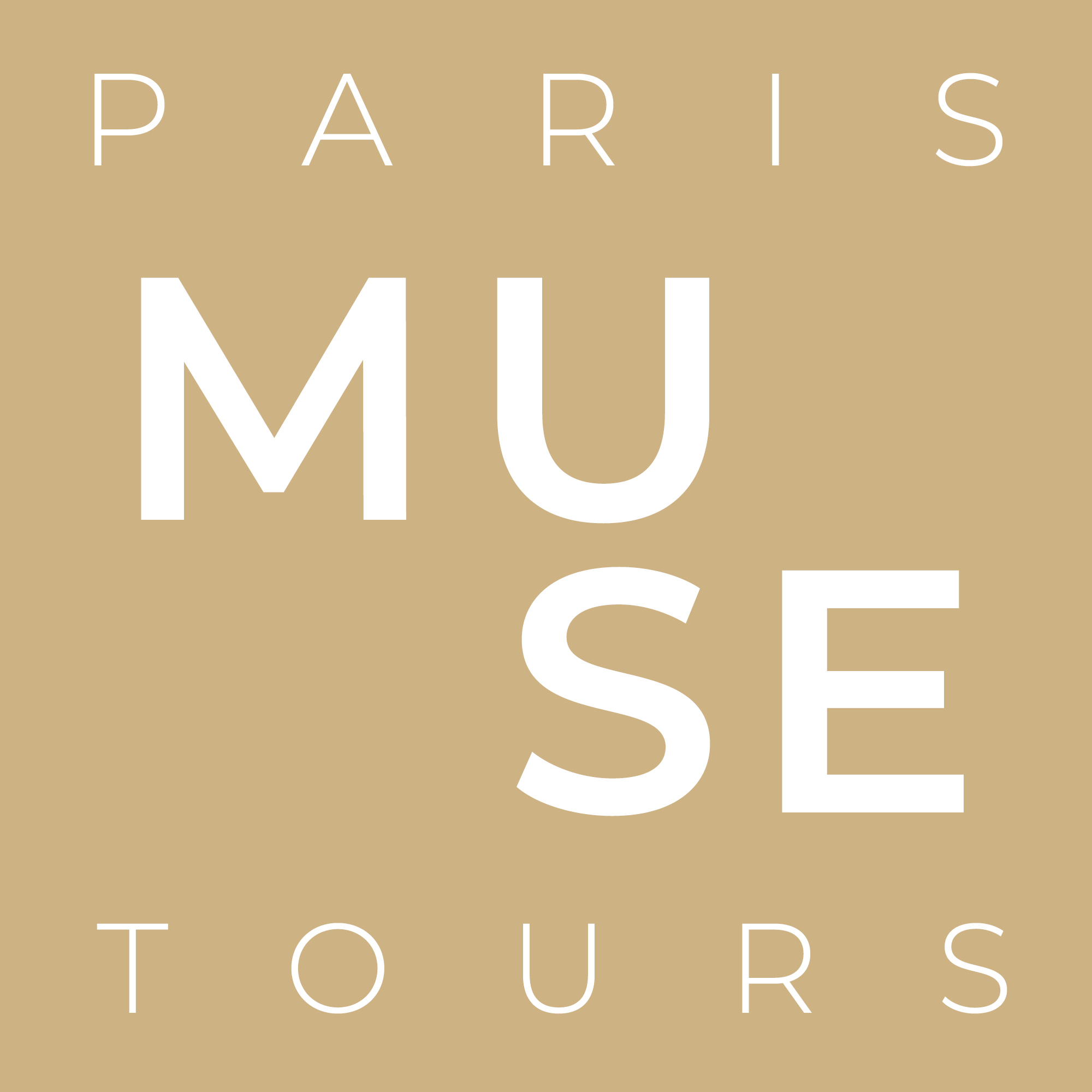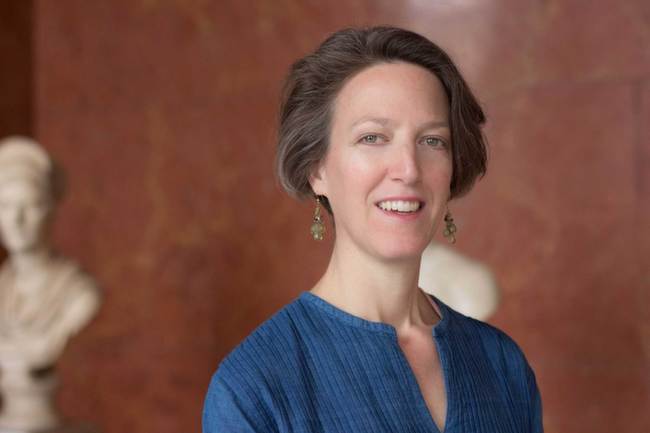Since Pamela joined us last spring, she has shared her in-depth knowledge and passion for 19th-century French art with countless Musée d’Orsay visitors. She recently finished her Ph.D. dissertation, “Word and Image in the Art Criticism of the Goncourt Brothers.” Taking a much-deserved breather, Pamela sat down with Paris Muse founder Ellen McBreen.
Ellen:
I guess I should be calling you “Dr. Warner” now, Pamela. Congratulations! You are an inspiration to the rest of us Paris Musers still slaving away on our dissertations. Did you find that working on it helped you as a guide and teacher?
Pamela:
Sure. The Goncourt brothers were two nineteenth-century French writers engaged with the problem of how works of art communicate visually using form and color. The Goncourts had a favorite phrase to describe the process set in motion by artists: faire toucher à l’oeil, to make [painting] touch the eye. I’ve always felt my challenge as an art historian and teacher is to find the words that will bring viewers back to the work of art, to feel this very physical sensation that is the result of careful looking.
Ellen:
How were you drawn to art history in the first place? And how did it bring you to Paris?
 Pamela:
Pamela:
I grew up outside of Detroit, Michigan, and was drawn into art history by the “art ladies,” as the grandmotherly docents from the Detroit Institute of Arts who did school outreach programs were called. I did my B.A. in French and Art History at the University of Michigan in Ann Arbor. After graduating, I worked for a year for ARTrain, a traveling museum installed in three railroad cars. Touring with the train really got me excited about bringing art to people, helping them find ways to look at it with enjoyment. I did my graduate work at the University of Delaware, and a two-year grant from the National Gallery of Art in Washington D.C. allowed me to move to Paris in September, 2000 to carry out research for my dissertation. Of course, the longer I stay, the less I want to leave!
Ellen:
So, would you say that living in Paris for the past four years helped your dissertation?
Pamela:
The amazing thing was that I could spend a morning reading the Goncourts’ art criticism, and the afternoon at the Louvre or the Musée d’Orsay looking at the very same paintings they were writing about. Without the ability to constantly check in with the original works of art, I think my dissertation would have been too conceptual.
Ellen:
You’ve had a lot of experience teaching undergraduates at the University of Delaware. Do you think leading these private museum visits for Paris Muse is similar to teaching art history in a more formal classroom setting?
Pamela:
I loved teaching, and it’s been a pleasure to re-discover face-to-face contact and conversation in front of art works. The excitement of our small group format is that it really allows for exchange. You can see clearly when people are lighting up and seeing new things. You can take them further into their areas of interest based on the questions they ask, the things they see in the paintings, and the connections they make to their own lives and other outside experiences.
Ellen:
Monet, Renoir, and Degas—these Impressionist painters are clearly the big crowd pleasers at the Musée d’Orsay. Do you have any recommendations for underrated favorites, an artist that is less visited than others maybe?
 Pamela:
Pamela:
I wish we could look more at the Orsay’s great collection of sculpture. Carpeaux’s The Dance from the facade of the Paris Opera house was just as big of a scandal as Manet’s Olympia, if not more so because it was commissioned by the government!
Also, I love the art nouveau decorative art rooms. I hope to create a tour for Paris Muse that would explore that little known section of the Orsay. To really understand the Impressionists, it helps to understand how the entire physical structure of Paris was changing in the 1860s and 1870s, and I think this tour could make a great follow-up tour to the Impressionists at the Orsay.
Ellen:
When you are not taking visitors through the museums, where do you go see art in Paris?
Pamela:
My boyfriend is a painter, and with him, I’ve gotten to know more of the contemporary scene in Paris: the galleries of the rue de Seine in St. Germain des Près, the installations at the Fondation Cartier in Montparnasse—which has a wonderful garden just for sitting and reading the paper on a Sunday afternoon! Another personal favorite of mine is the Hall St. Pierre in Montmartre, a cultural center that often has smart shows of art brut (outsider or naïve art). It, too, has a great café—a quiet oasis far from the Sacré-Coeur crowds.
Ellen:
I detect a pattern here! Art with handy resting stops nearby.
Pamela:
Yes! When you are really looking, art can make you quite thirsty.






